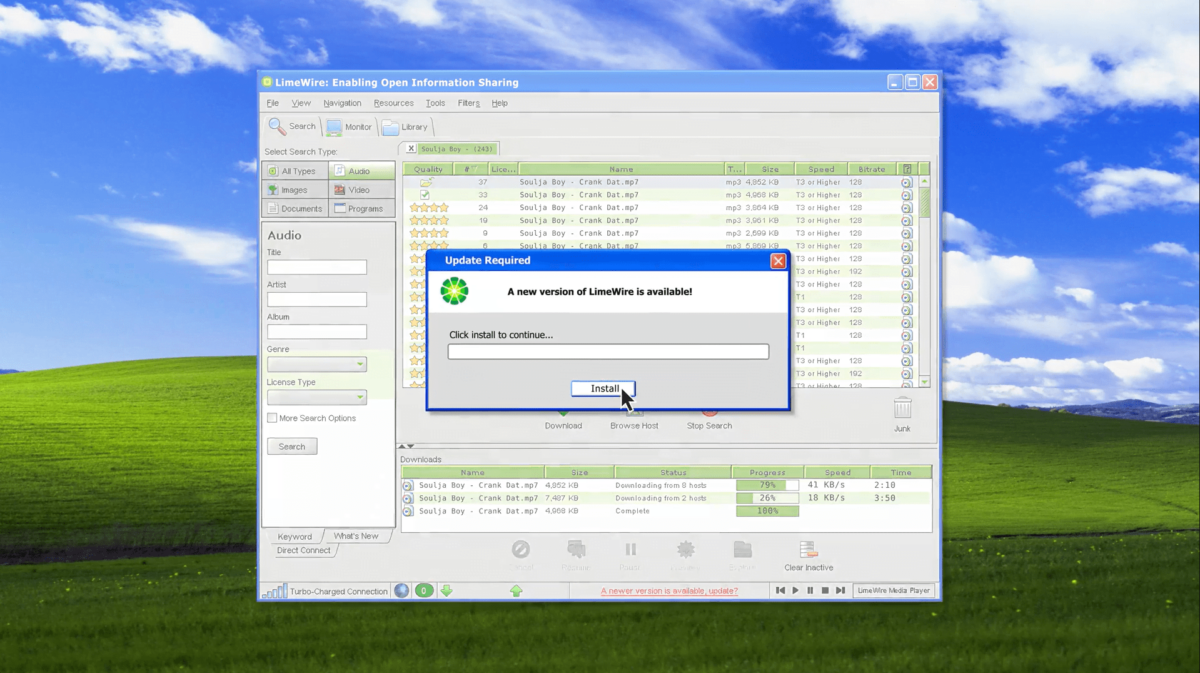$LMWR? LimeWire is back from the dead as a Web3 brand

Who remembers LimeWire, the now-defunct peer-to-peer file-sharing service that ruled the roost in the early 2000s? Back in its heyday, Limewire had more than 50 million monthly active users. But things changed in 2010, when the file-sharing website was shut down by a US federal court after a four-year legal battle.
For those still nostalgic about the place you downloaded your first MP3, you’re not alone.
Given the platform’s rebellious nature, perhaps it makes perfect sense that LimeWire now is resurrected on the blockchain. And after months of teasing a tokenized offering, the new iteration of the iconic peer-to-peer service has finally been revealed. But it’s very different from what you might remember.
The new LimeWire
It’s safe to say that LimeWire has undergone significant transformations since its inception in May 2000. After being shut down in October 2011, the old platform seemed to have been in limbo until the brand rights were acquired by Austrian brothers and businessmen Julian and Paul Zehetmayr in 2021.
During the initial NFT boom, the two undoubtedly saw the parallel between the defiant, peer-to-peer NFT culture and that of peak LimeWire before deciding on plans to bring the brand onto the blockchain as an NFT marketplace. Now the “new LimeWire” has emerged to help reinvent how fans and artists share content and interact with each other.
So, what is this latest version of the defunct service? Essentially, as explained on the LimeWire website, the new LimeWire is “a platform for content creators, artists and brands to create membership-based communities for their most passionate fans.” But how?
It’s all about community.
The new LimeWire aims to help content creators build recurring revenue streams by providing a platform and framework for direct fan membership. In turn, fans will gain access to exclusive content, a private community, the ability to communicate directly with artists and brands they support, and become part of their journey.
If that sounds like an NFT fan club to you, you’re on the right track. Essentially, LimeWire will act as a Web3 subscription platform for community building. And this platform will be aimed at music creators and consumers.
“Originally relaunched in mid-2022 as a marketplace to buy, sell and trade digital collectibles, the new LimeWire has now evolved into a full-fledged membership platform,” the LimeWire website explains. “Through blockchain technology, we make exclusive content and assets owned and traded, allowing fans to not only consume exclusive content, but also participate directly in the success of the creators they support.”

All things considered, the new LimeWire venture could prove to be a solid Web3 brand integration. And given that community building has anecdotally been the duty of creators and collectors—and one that has existed halfway between Twitter, Discord, and various NFT marketplaces—the benefits of this, what almost feels like a sort of Web3-powered Patreon, seems undeniable.
The LimeWire token
But what exactly is the plan for LimeWire to be based on the blockchain?
To better blend with the sensitivities of Web3, the Zehetmayr brothers chose to move away from NFTs (at least for the time being) and look at another prominent facet of the blockchain – crypto. To do so, they set out to offer a community token that would essentially fund the new LimeWire platform and serve as the lifeblood of the ecosystem.
In the form of an Ethereum-based ERC-20 utility token, LMWR is said to be deeply embedded in the LimeWire ecosystem, designed to benefit holders while improving the user experience across the platform. And with the LimeWire token public sale launching on May 2, 2023, the distribution of one billion tokens to Web3 community members (and undoubtedly some general investors) will likely carry enough weight to act as a catalyst for something innovative to come .
Actually within the first 2 hours of the public sale of LMWR, Limewire raised more than $2 million.
Next comes the question of what the LMWR token can do actual used for. Although not directly comparable to tokens like ApeCoin or $FWB, users can assess the utility of the token as akin to offers in the same way. That is, as a community and utility token, it will likely be of value and importance in everything LimeWire does from here on out — especially when it comes to the fan-artist economy.
For enthusiasts who find the opportunity to be part of the blockchain-powered inner circle of LimeWire participants like Elijah Blake, Cheat Codes, Soulja Boy and Slushii alluring, investing in LMWR as it trades on various crypto exchanges could be a good move . . But for those who might be skeptical of yet another old brand resurfacing in Web3, the classic crypto strategy of wait and see is also a solid choice.
























